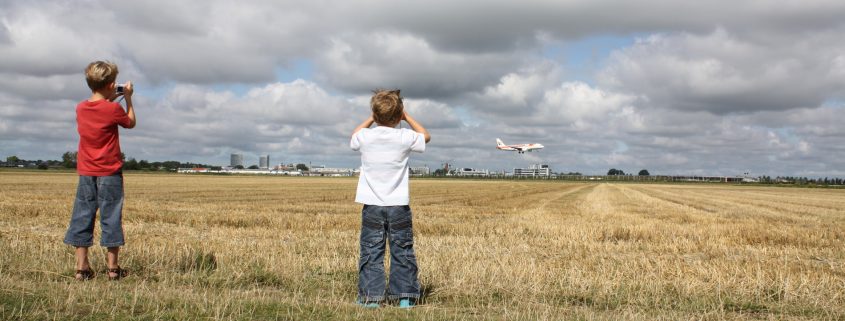The National Aerospace Laboratory (NLR) has graphically mapped the flight profiles and noise data of numerous aircraft types. This data is now available on the recently launched website: luchtvaartmilieu.nl.
The site is intended for visitors who are searching for data pertaining to aircraft noise exposure levels, flight procedures and noise contours. Calculation rules have been legally established in the Netherlands to regulate the methods used to calculate the aircraft noise exposure around airports.
According to these rules, the noise exposure are calculated using a database having predefined noise exposure levels and flight procedures of various aircraft. This website presents these aircraft data graphically as well as the corresponding noise footprint contours.
Since the late 1980s researchers have used dense bundles of tables and statistics to calculate aircraft noise emissions levels in the Netherlands. NLR is involved in the creation of this noise and performance source data, which, combined with various calculation guidelines, serve as the ‘appendices’ on which current Dutch regulations pertaining to airport noise exposure levels are based on.
In late 2010 NLR updated this data, and the resulting document ran to some 850 pages, which clearly does not constitute an easily accessible or perusable publication. This however has now changed, as NLR has developed a web application called AppendicesViewer, in which all data contained in the appendices are presented in a more visually attractive manner.
The need for a more insightful and visually attractive publication of noise exposure data was reinforced by a legislative amendment passed in November 2009 (RBML). This amendment transferred powers away from central government and to provincial governments with respect to spatial planning and environment issues. Provincial governments consequently have become more directly involved in matters relating to noise level measurements at airports of national and regional importance, and thus there are now more users of the appendices.
NLR’s AppendicesViewer allows users to, for example, choose the least noise disturbing flight procedure from a range of approach and takeoff procedures, as based on which one results in smallest noise footprint. Smaller noise footprint contours indicate lower noise exposure levels than larger footprint contours. However, a halved area of a noise foutprint does not result in a 50% reduction of its noise exposure level. It is interesting and instructive to compare the noise footprints of various flight procedures; for example, the noise emission levels of approach in which part of the approach flight is flown at a fixed altitude (the ‘2000 or 3000 foot approach’), as compared to an approach in which a virtually continuous descent approach is maintained (the Continuous Descent Approach or CDA for short).
In addition to the AppendicesViewer, the website will in future also be expanded to include an expertise portal for Aviation and Environmental issues. Users of the web application can send any additional questions to: info@luchtvaartmilieu.nl
See also: www.luchtvaartmilieu.nl



